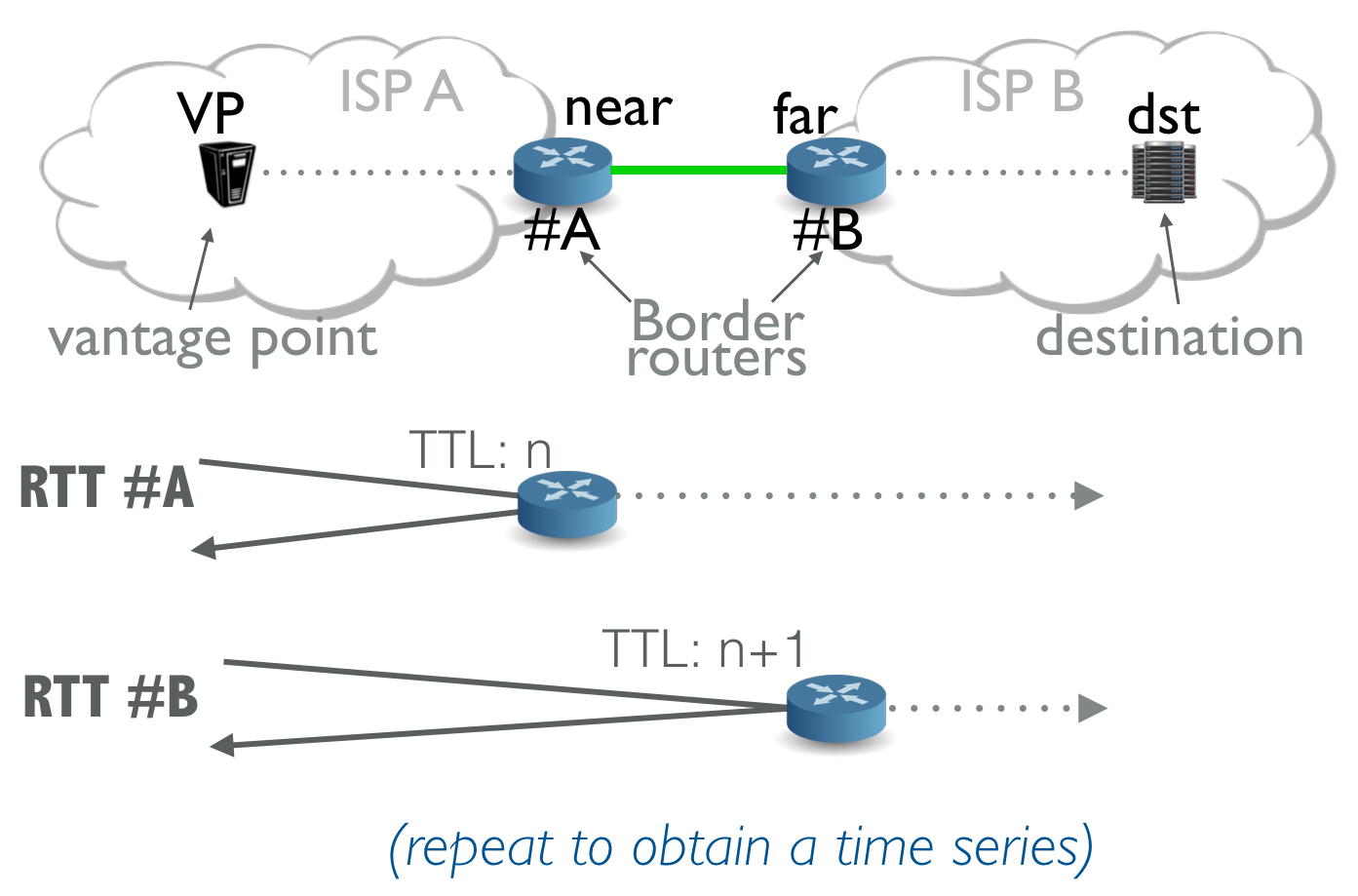
The MANIC project -- Measurement and Analysis of Interdomain Congestion -- has developed a prototype system to monitor interdomain
links and their congestion state, in order to provide empirical grounding to debates related to interdomain congestion. Its dataset
is collected using the
Time-
Sequence
Latency
Probing (
TSLP)
method from Ark Vantage points, after running the
bdrmap algorithm to automatically infer
the IP links (the near IP and far IP addresses) interconnecting neighboring Autonomous Systems (ASNs).
We will soon integrate MANIC with CAIDA's AS Rank platform to allow more complex queries of the Internet's interconnection infrastructure.
Consider two neighboring networks ISP A and ISP B, interconnected by interdomain link A-B of interest.
The corresponding physical link interconnects the edge ("near") router located at the border of ISP A with the edge ("far") router
at the border of ISP B (see figure). The TSLP process probes a destination "behind" the interdomain link with TTL set to expire respectively at the near
and the far ends of the link. Repeating this operation periodically yields an RTT timeseries for both sides of the link.
When the buffer occupancy at the interdomain link increases, RTTs to the far end increase, which indicates evidence of congestion on the interdomain link.
For more details, see
our recent publication at ACM SIGCOMM 2018.

 The MANIC project -- Measurement and Analysis of Interdomain Congestion -- has developed a prototype system to monitor interdomain
links and their congestion state, in order to provide empirical grounding to debates related to interdomain congestion. Its dataset
is collected using the Time-Sequence Latency Probing (TSLP)
method from Ark Vantage points, after running the bdrmap algorithm to automatically infer
the IP links (the near IP and far IP addresses) interconnecting neighboring Autonomous Systems (ASNs).
We will soon integrate MANIC with CAIDA's AS Rank platform to allow more complex queries of the Internet's interconnection infrastructure.
The MANIC project -- Measurement and Analysis of Interdomain Congestion -- has developed a prototype system to monitor interdomain
links and their congestion state, in order to provide empirical grounding to debates related to interdomain congestion. Its dataset
is collected using the Time-Sequence Latency Probing (TSLP)
method from Ark Vantage points, after running the bdrmap algorithm to automatically infer
the IP links (the near IP and far IP addresses) interconnecting neighboring Autonomous Systems (ASNs).
We will soon integrate MANIC with CAIDA's AS Rank platform to allow more complex queries of the Internet's interconnection infrastructure.
